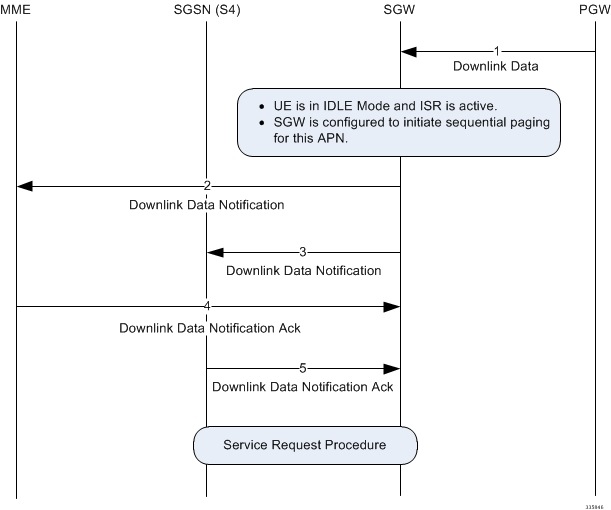Feature Description
This section describes the Intelligent RAT Paging for ISR feature on the S-GW.
When Idle Mode Signaling Reduction (ISR) is active, and a UE is in idle mode with control plane connections to both the MME and the S4-SGSN, and the S-GW receives downlink data for that UE, it sends Downlink-Data-Notification-Requests (requests to page UEs) to both the S4-SGSN and MME in parallel. This scenario causes the following problems:
- Both the MME and S4-SGSN perform paging in parallel, thereby resulting in an overuse of radio resources. The UE can be camped on either the MME or S4-SGSN, and respond to the paging of either the MME or S4-SGSN, so the radio resource of one node is not used effectively.
- If the S-GW tries to send DDN messages to both nodes sequentially, there can be a delay in call setup and establishment.
The Intelligent RAT Paging for ISR feature reduces both the radio resource usage due to paging and the internal load on the MME/S4-SGSN nodes.
The S-GW intelligently determines when to perform sequential paging as opposed to parallel paging by identifying the APN and its configuration (in the apn-profile configuration) for the downlink packet for which paging is originated. This provides the following benefits:
- More efficient utilization of radio resources used for paging when the incoming packet is not delay sensitive.
- Reduction in the delay of call establishment due to parallel paging when the incoming packet is delay sensitive.
This feature is useful for ISR enabled Networks to reduce the radio resource usage due to paging.
Relationships to Other Features
Before configuring the Intelligent RAT Paging for ISR feature on the S-GW, be aware of the following requirements and relationships to other features:
- This feature is useful if the peer MME and S4-SGSN also support ISR.
- If operators want to have the ISR paging method recovered for a given PDN, the Session Recovery feature must be configured on the S-GW.


 Feedback
Feedback